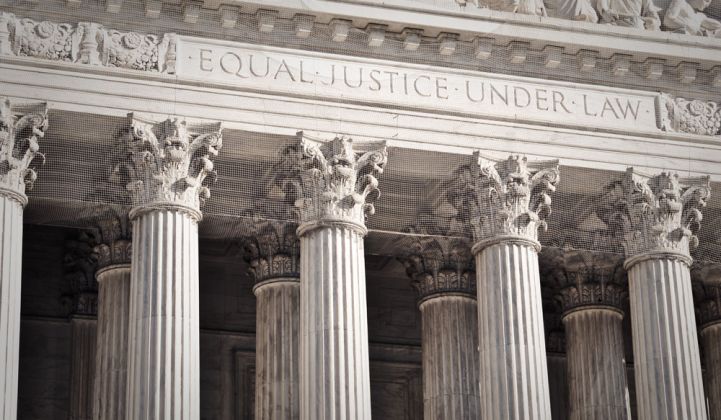The U.S. Supreme Court announced on Monday that it will hear an appeal of a lower court ruling that vacated the Federal Energy Regulatory Commission's Order 745, which calls for demand response to be paid on equal footing as generators in wholesale energy markets.
The issue at stake is not just the price demand response can be paid, but the question of whether FERC has the authority under the Federal Power Act to regulate the rules of the wholesale power markets.
The court will rule on these two questions:
Whether the Federal Energy Regulatory Commission reasonably concluded that it has authority under the Federal Power Act, 16 U.S.C. § 791a et seq., to regulate the rules used by operators of wholesale-electricity markets to pay for reductions in electricity consumption and to recoup those payments through adjustments to wholesale rates.
Whether the Federal Energy Regulatory Commission's jurisdiction over interstate markets for wholesale sales of electric energy under sections 201, 205 and 206 of the Federal Power Act, 16 U.S.C. §§ 824(b)(1), 824d and 824e, provides the Commission with authority to regulate participation in those markets by demand response resources.
As detailed in Greentech Media’s previous reporting, the issue has brought together demand response providers, grid operators, and large corporations that benefit from demand response payments in unity against the Electric Power Supply Association, which brought the challenge to FERC Order 745.
“I think the united front that was presented by state public utility commissions, the solicitor general, environmental groups, industrial companies, consumer advocates, and many other organizations helped drive the message home that this issue is of national importance,” said Sarah McAuley, senior director of marketing at EnerNOC.
“The announcement is a good sign that the Supreme Court wants to ensure a workable division of authority between states and the federal government over our electric grid, which is sorely needed considering the flow of electricity doesn't adhere to state lines,” Allison Clements, senior attorney with Natural Resources Defense Council, wrote in a blog post.
Others have been more assertive in their outlook on the case. Former FERC chairman Jon Wellinghoff is confident that the court will side with FERC in terms of its jurisdiction.
“The lower court’s decision to vacate FERC Order 745 is inconsistent with the law and undermines the rights of customers to make smart choices about how they consume energy,” Jon Wellinghoff, strategic advisor to the Advanced Energy Management Alliance, said in a statement. “I am confident that when the justices hear the merits of this case, they will restore FERC’s authority in this matter.”
No matter what the decision, changes are already afoot. PJM, the largest grid operator in the U.S., is already weighing its options if the lower court ruling is upheld. Demand response is also evolving to be used in targeted, faster-responding applications that open up additional questions about compensation, according to a GTM Research report, U.S. Demand Response Markets Outlook 2014.
“Compensation for demand response will become a bigger analytical and practical challenge,” the report authors wrote. “With an increased number and variety of distributed energy resources and demand response load types, the competing incentives problem will be exacerbated and baselines will become more complicated.”
Even if FERC is victorious, it will not only be the federal government that will have to sort out the future of demand-side resources in coming years. States such as California, Texas and New York, which all have their own independent system operators, are retooling their markets to allow more distributed energy resources at the grid edge to participate.
The case will be heard during the Court’s October term.
***
Join Greentech Media’s Grid Edge Live June 23-25 in San Diego to learn more about how distributed energy resources are challenging regulators, utilities and businesses to create new models for valuing demand-side resources.



